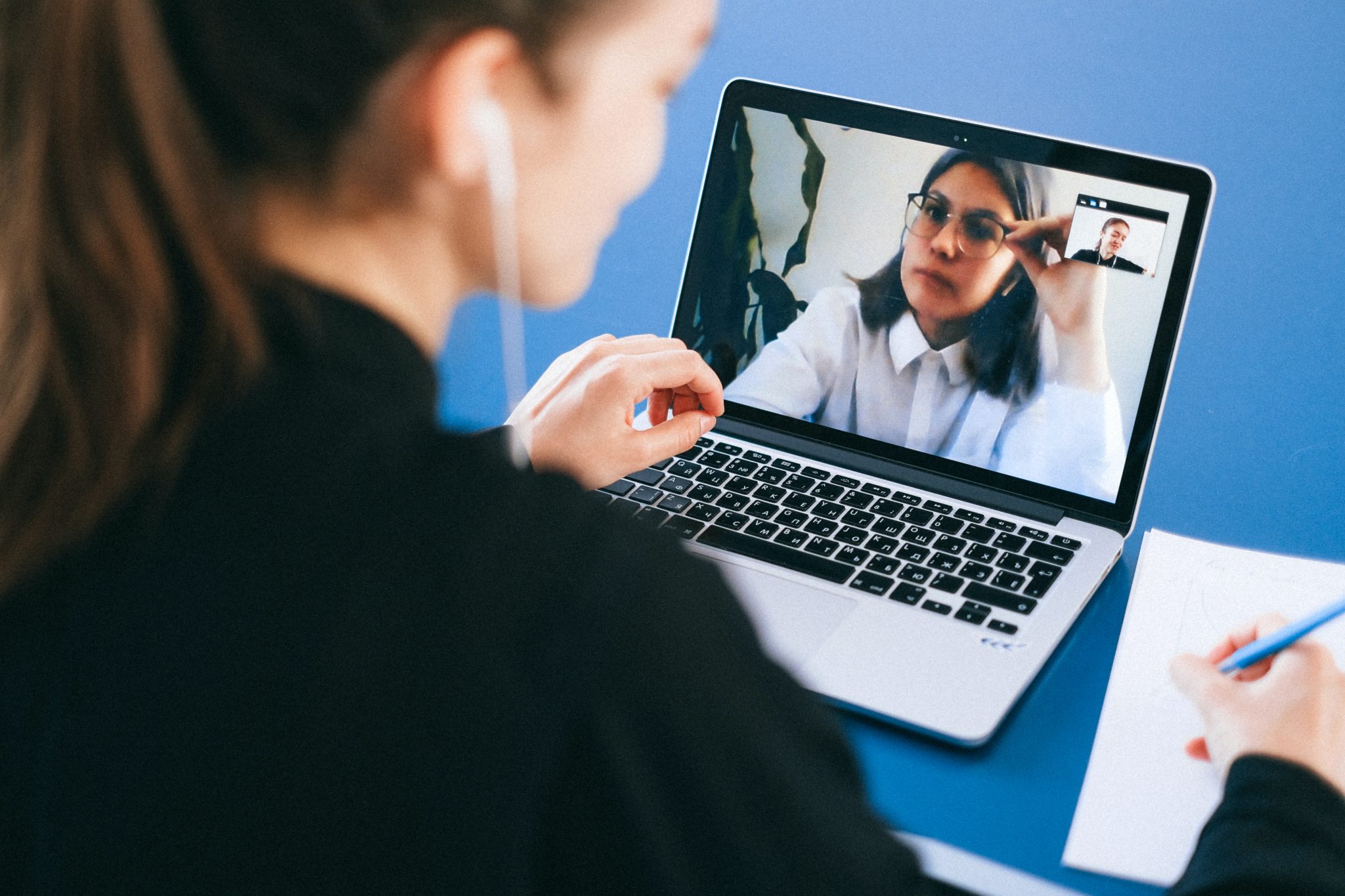
In short, you’re going to need Zoom meetings going forward. So, instead of groaning at that fact, we’re going to detail some ways that Zoom can be your best friend. I’ll be honest. This morning I received a Google Calendar invite for a Zoom call. I was not thrilled.
The reason? I had just Zoomed out and didn’t want another “quick” meeting. Obviously, I’m not the only one who is overcome by the phenomenon known as Zoom fatigue. But, to be fair, that’s not Zoom’s fault. Most of us have become burned with virtual meetings in general and long to return to normalcy.
The good news? It appears that we are finally heading back to a pre-Covid world. At the same, however, virtual meetings aren’t going anywhere anytime soon — which means Zoom as well.
According to Upwork’s Future Workforce Pulse Report, predicts the number of remote workers will be nearly double what it was before COVID-19: by 2025, there will be 36,2 million remote workers, an increase of 16,8 million from pre-pandemic rates.
Moreover, Gallup’s September update of its monthly employment trends found that 45% of full-time U.S. employees worked from home either all (25%) or part of the time (20%). Moreover, Gartner predicts that 74% of American companies are currently using or permanently implementing a hybrid work structure.
Is this good for business? You betcha.
Whether you have a fully remote team or implement a hybrid model, this is a win for all parties involved. With a more flexible schedule and less commuting, employees tend to be happier and more productive. Besides increasing output, there’s also less turnover. And, you can save money by reducing utility costs or downsizing to a smaller location.
Here are several ways that Zoom can be your best friend.
Focus on why Zoom is the best video conferencing tool.
In 2020, stay-at-home orders made video conferencing a necessity. But why did Zoom become the de facto video conferencing tool?
Zoom dominated the market mainly because it’s easier to use than traditional video conferencing platforms, which have a lot of complicated settings. As such, as long as you had a connection, anyone could use Zoom on any device.
What’s more, Zoom is an uncluttered interface that offers;
- 1-click to join a meeting
- Easy screen sharing
- Prompts for sound and video are automatic
- A built-in chat feature
- Automatic recording for post-meeting notes
- The ability to switch from large to small group meetings easily with breakout rooms
- Audio transcriptions
- Diagramming on the fly with a whiteboard
Zoom has the highest video resolution among video conferencing platforms despite its limitations. You get high-definition resolution with the free version, while paid accounts can get up to 1080p. However, your internet connection can also affect the quality of the meeting.
Speaking of the free version, you can host up to 100 participants and have unlimited group meetings for up to 40 minutes. And there are also endless one-to-one meetings with a 30-hour time limit per meeting.
As long as you properly schedule your virtual event, like having an agenda, these time limits should be more than enough. If not, you can opt for a paid plan depending on your specifications.
Become a Zoom master.
“Whether you’ve been using Zoom for years or have only just signed up in the last year or so, there are many helpful and fun tips, tricks, and hidden features you can find to upgrade your video chatting experience and make your video meetings a little less weird — and hopefully avoid Zoom fatigue and Zoom anxiety.” writes CNET’s Alison DeNisco Rayome.
- Adjust your background. Simply go to Settings > Virtual Background and select or upload the image you want.
- Change your name. At the bottom of the screen, click the Participants button once you are in the meeting. Click More > Rename once you have selected your name. Enter your desired name and click OK.
- Become familiar with keyboard shortcuts. You can, for instance, press and hold the spacebar to quickly mute and unmute your mic right from your keyboard. Zoom’s complete list of keyboard shortcuts can be found here.
- For smaller group discussions, create Zoom breakout rooms. Go to Account Management > Account Settings to set up a breakout room as the host. Ensure that the setting is switched on under the Meeting tab, under Breakout Room. Additionally, meeting hosts have the option of pre-assigning breakout rooms to participants.
- Use emojis and the vanishing pen. Emoji reactions allow you to tell the hosts what you think even when you are muted in a meeting. And, you have 40 options to choose from. In addition, you can highlight text or objects with the vanishing pen when sharing your screen. The highlights will fade over time, so you don’t have to go back and undo them.
Get organized and increase engagement.
“A disorganized in-person event will leave attendees feeling they didn’t get what they paid for,” writes Deanna Ritchie in a previous Calendar article. “A disorganized virtual event will lose those attendees completely before the event has ended (and in many cases before it’s even started.).”
“This is why you want to use high-quality communication tech to keep everyone on the same page — and this isn’t just referring to paying for a Zoom account.” Also, additional tools can be invaluable to ensuring an exceptional event.
Companies were given some grace in the early days of the pandemic, as they figured out how to host an online event as smoothly and efficiently as possible, Deanna explains. “Now, event attendees no longer give grace to an unorganized virtual event.” Moreover, companies should ensure their virtual events are well-structured, well-organized, and produce results.
Increasing engagement through communication technology.
“The ability for attendees to listen to lectures and training sessions after the fact means many will jump ship as soon as they feel bored,” she adds. “They know they can come back later to listen to the recording (often at 1.5X speed to get it over with faster.).”
Because of this, organizations must use the right communication tools to ensure their events run smoothly, she suggests. And this starts with pairing Zoom with an excellent digital calendar. There are several benefits to this combination.
One prominent example would be smaller meetings. “When your event includes a handful of people, you can use a digital calendar to inform everyone of the time of the event.” You can also include live-stream links, notes, and guest lists on most calendar apps. If any details of an event change, these tools can also generate notifications immediately.
“Along with smaller gatherings, a calendar is critical to larger events,” says Deanna. “As you begin to plan an event, you can use a calendar app to orchestrate logistical meetings and make sure that your team is staying closely connected.” With the app, you can also ensure that attendees remember the date of the event.
Don’t use up all 40-minutes.
Did you ever wonder why most TED Talks are under 20 minutes long? It’s because we have limited attention spans.
Chris Anderson, the curator of the TED conference, explained it as follows:
It [18 minutes] is long enough to be serious and short enough to hold people’s attention. It turns out that this length also works incredibly well online. It’s the length of a coffee break. So, you watch a great talk, and forward the link to two or three people. It can go viral, very easily. The 18-minute length also works much like the way Twitter forces people to be disciplined in what they write. By forcing speakers who are used to going on for 45 minutes to bring it down to 18, you get them to really think about what they want to say. What is the key point they want to communicate? It has a clarifying effect. It brings discipline.
A short video call or presentation will keep your audience engaged just as effectively as an in-person event. Also, most of us are spending time staring at screens than sleeping. Americans spent 4.1 hours a day interacting with mobile devices alone in 2021.
Remember, if you’re exposed to too much blue light, it could cause problems like insomnia. So any attempt to reduce time spent watching screens is helpful. And that could be as simple as not using up that 40-minute time limit for free Zoom users.
Create theme days.
“Get your team together for a themed day,” suggests Esther Yoon over on the Zoom Blog. “Zoom’s internal Happy Crew does a great job putting together themed days where Zoom employees can get on Gallery View and share each other’s get-ups” on these days, like for holidays or special occasions.
Are you stuck on ideas?
Why not dress up as your favorite superhero or throw a formal black-tie event? Playing games, showing off your pet, or virtual lunches where you share recipes could also be fun activities.
Considering how many options there are, this may easily become a recurring event for your team.
Integrate human experiences into virtual worlds.
During the pandemic, a lot of people not only used Zoom to communicate and collaborate with others. But, some people even use it to make new friends. However, when it was time to meet in real life, these friendships didn’t last.
Amy Johnson, a professor of communication at the University of Oklahoma who studies long-distance friendships, told The Atlantic that this happens often. There’s a tendency for people to avoid conflict when communicating digitally because it’s become normalized as a face-to-face interaction (consider breaking up with someone in person rather than sending a text message or even calling). Online relationships can be idealized without conflict, and missing information about the other person can be filled in positively. However, when we meet in real life, we may feel less close to the person if their attributes do not match our expectations.
And, yes, this does apply to work as well. For example, there may be a time when remote team members finally meet up in person. Or, maybe you have team members who haven’t seen each other in a very long because of remote or hybrid schedules. In either case, Zoom can be used to break the ice or build authentic human experiences.
Some suggestions would encourage non-work events, like a movie night or book club. There are also virtual team-building activities you could explore. And, instead of large group events, schedule smaller groups or one-on-ones so that everyone has time to engage with each other.
Image Credit: Anna Shvets; Pexels; Thank you!
Zoom Can Be Your Best Friend was originally published on Calendar by John Hall.

